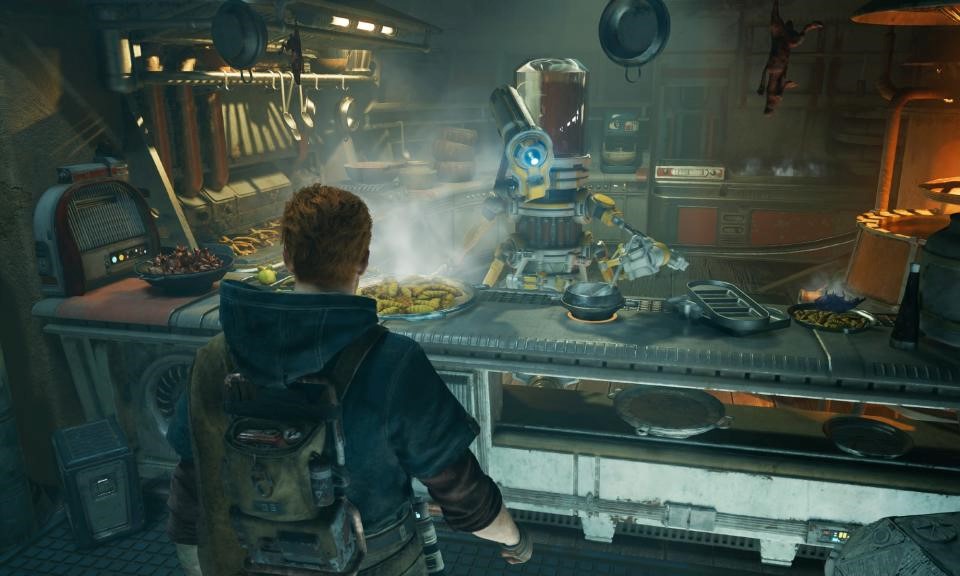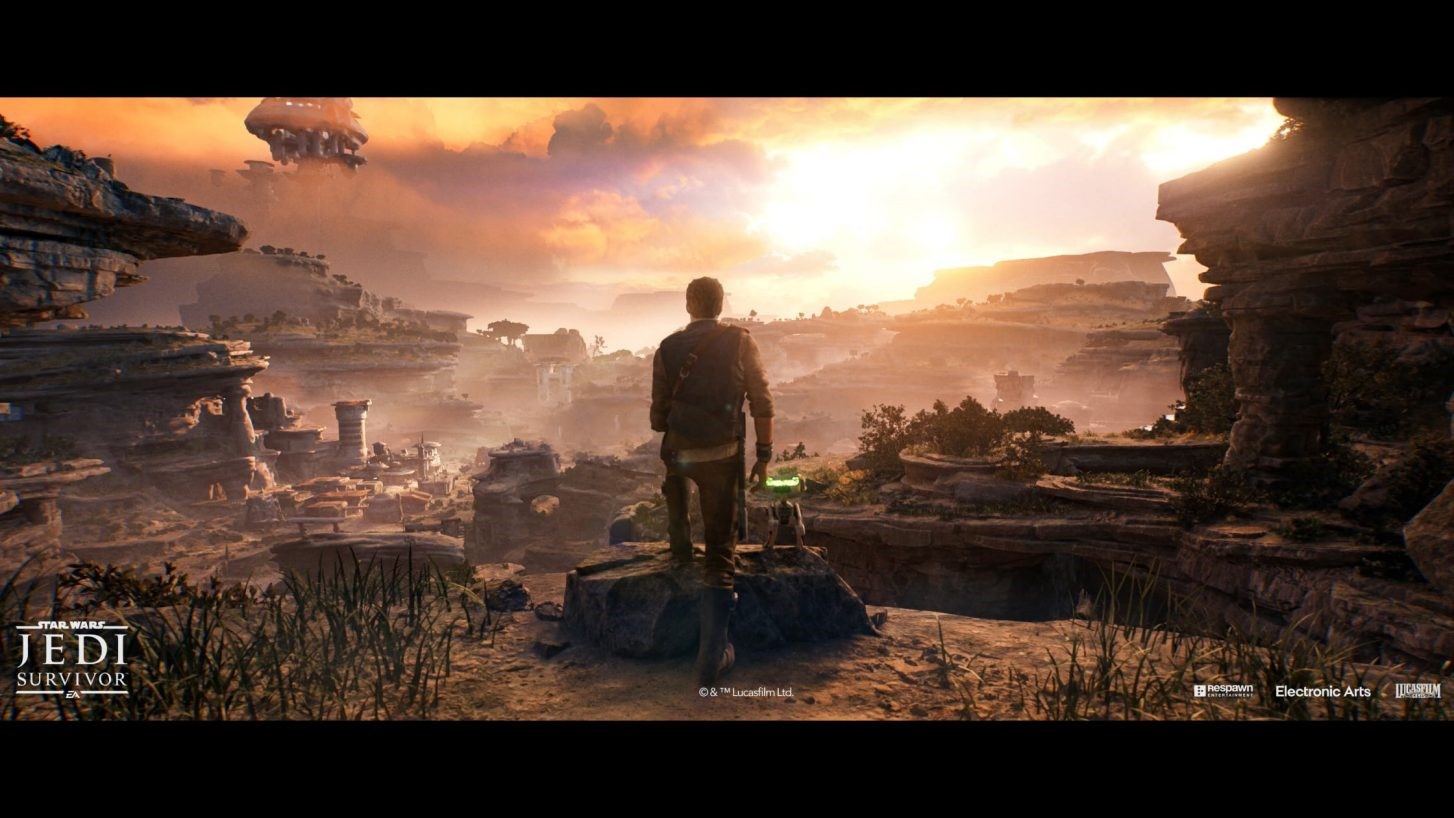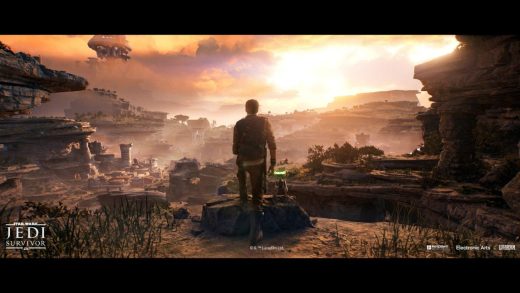Star Wars Jedi: Survivor patch promises ‘solid 60 fps’ performance on consoles
‘Star Wars Jedi: Survivor’ and the year of disappointing PC ports
Things will get worse before they get better.

If you’ve been anywhere near a gaming forum recently, you’ve probably seen something about the state of Star Wars Jedi: Survivor on PC. Even in a year that has seen some abysmal PC releases – I’m looking at you, The Last of Us Part 1 — the latest from Respawn Entertainment stands out.
Performance is the big issue everyone is talking about, and it’s easy to see why. If you want to watch a deep dive into the game’s technical woes, check out some of the recent videos Digital Foundry and Daniel Owen have uploaded to their YouTube channels. However, the short version is Jedi: Survivor has all the issues that have plagued many a recent poor PC port.
Each time you launch the game, it puts you through a shader pre-compilation process that, frustratingly, doesn’t prevent stuttering. Jedi: Survivor also suffers from traversal hitching, meaning your frame rate will drop when you enter a new location. Annoyingly, these were issues that were present and never addressed in Jedi: Fallen Order. And unfortunately, there’s no amount of hardware that can fix those problems in Jedi: Survivor.
I’m playing the game on a PC with an AMD Ryzen 5600x and NVIDIA RTX 3070. My system is not bleeding edge but it’s also not a toaster. The thing is, there’s no combination of settings that leads to Jedi: Survivor producing a consistent frame rate due to how the game makes use of your system’s processor and available VRAM. Even players with RTX 4090 GPUs reported poor framerates at launch.
Adding to the performance issues is Jedi: Survivor’s status as an AMD-sponsored title. The game supports AMD’s FSR upscaling technology, but not DLSS and XESS. While it’s true you can use FSR with NVIDIA and Intel GPUs, Jedi: Survivor’s implementation leaves a lot to be desired. Even set to the “Quality” setting, the tech introduces distracting artifacts that take away from the game’s otherwise compelling presentation. FSR also does little to nothing to improve your framerate since the game is so CPU limited.
And then you have Jedi: Survivor’s settings menu. In short, the game features one of the least helpful settings menus I’ve seen in recent memory. It’s not properly coded for mouse navigation; none of the graphical options come with an explanation of what they do; and the game doesn’t even offer a hint of what kind of performance impact you can expect from tweaking specific settings. But the worst offender is Jedi: Survivor’s ray tracing options – or should I say, option, singular. Unlike nearly every other modern PC release, Jedi: Survivor bundles all of its RT features into a single toggle, meaning you can’t use less expensive ones like ray-traced ambient occlusion on their own.
What makes all these issues so frustrating is that things don’t have to be this way. In 2023, it’s not a secret what makes a great PC port, and there are plenty of examples studios can look to for inspiration. For instance, having played God of War 2018 on PlayStation 4 Pro, PS5 and PC, I think there’s an easy argument to be made that the PC version is the definitive way to play that game. In the case of Respawn, the studio doesn’t even need to look that far for an example of how to build a great PC port. In 2016, it released Titanfall 2: to this day, one of the best games you can play on PC.
A note from the Jedi Team on the PC version of Star Wars Jedi: Survivor pic.twitter.com/C3bp78VICr
— EA Star Wars (@EAStarWars) April 28, 2023
EA had been somewhat dismissive of player complaints, suggesting that only a “percentage” of PC players are experiencing performance issues, and that some of those issues are due to people using high-end CPUs with Windows 10. In any case, EA said Respawn was doing its best to fix the game.
Sure enough, on the Monday after Jedi: Survivor’s Friday release, Respawn released a patch that promised performance improvements. I found the update increased my average frame rates but did nothing to address the game’s stuttering. The latest patch, released partway through last week, was supposed to address that issue, but I find the game will still slow down when I enter new areas. Respawn has promised additional updates are on the way that will supposedly further improve performance.
So how did we get here, and, who, if anyone, is to blame for the state of PC ports in 2023? Those are questions I’ve been thinking about a lot over the past few days. Unfortunately, there are no easy answers.
From a technical standpoint, there’s a reason PC ports were more competent during the eighth generation of consoles than at almost any other time in the past: it was easy. Or, at least, easier. The PlayStation 4 and Xbox One saw the switch to x86 processors that were effectively less-powerful versions of what PC gamers had in their towers. It was also one of the longest generations in recent memory. It’s only in the last year or so that we’ve seen publishers like EA abandon cross-gen releases in favor of current-gen exclusives. On PC, that stability meant you could get away with using your components for longer. I bought an Intel Core i5 6600K in 2015 and only upgraded in 2021 after Red Dead Redemption 2 was too much for that processor’s four-thread architecture.
With the transition to PS5 and Xbox Series X, more care and attention needs to be given to PC ports. Current consoles are laser-focused on gaming, and don’t need to run Windows in the background. Then there’s the fact that, for the first time in a long while, the average gaming PC isn’t as powerful as a current-gen console. If you don’t believe me, look at Steam’s most recent hardware survey. The most popular GPU is the nearly four-year-old GTX 1650. Moreover, six- and four-core processors make up the majority of CPUs in use by Steam players, with eight-core ones represented in less than 20 percent of all systems. Put all this together and it becomes obvious that lazy ports just won’t cut it anymore.
As more current-gen games are released and those titles take advantage of everything the PS5 and Xbox Series X have to offer, I think we’re going to see more shoddy PC ports.
Cal’s newest journey in a galaxy far, far away has begun and we’re excited for you to experience it!
Our first patch will arrive on launch day across all platforms. In the weeks ahead, we’ll deploy patches that will:
– Fix bugs
– Improve performance
– Add more accessibility… pic.twitter.com/pUtyoGopP5— EA Star Wars (@EAStarWars) April 26, 2023
But a technological shift is only one part of it. Publishers are not blameless in this. Two of the worst PC ports released this year, Jedi: Survivor and The Last of Us Part 1, were pushed back to give their developers more time for polish. In the case of Jedi: Survivor, Respawn specifically called out the game’s performance as one of the reasons for the delay. EA decided against further delaying the game, knowing full well the state of the product it was about to release. In fact, EA even warned fans the game was coming in hot, tweeting two days before Jedi: Survivor’s release that a day one patch was the first of many updates it had planned. The publisher said future patches would fix bugs, improve performance and add more accessibility features.
Unfortunately, it is now business as usual for publishers to release an unfinished game and promise to fix it later. And for the most part, they’re rewarded for doing so, because there’s nothing the gaming community loves more than a good redemption story. Think of a game like No Man’s Sky or, better yet, EA’s own Star Wars: Battlefront II and Battlefield 4. All three were poorly received at release, but after months and years of hard work from the studios that created them, they’re now highly regarded.
I wish I could say things will get better soon, but in the short term, I don’t think we’ll see many improvements. It’s not impossible for a studio to release a technically competent PC port, but it takes time, resources and a publisher willing to make a game’s PC fanbase a priority. A fundamental change in how game publishers do business is needed, and that will take time.

(13)



